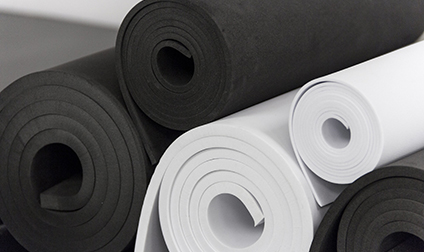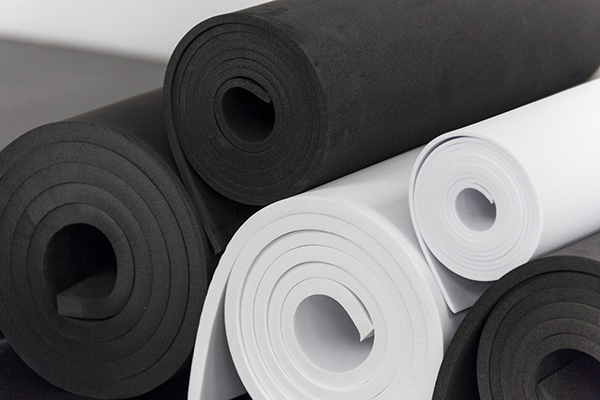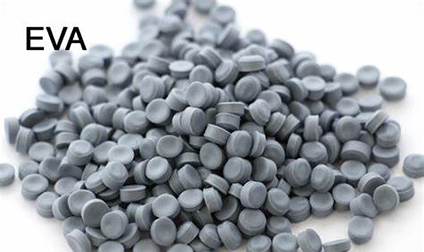

SEARCH THE BLOG

home > Knowledge Center > Article details
What is EVA foam?
Time of issue : 2022-11-22 10:57:38

Let's start with introducing the physical properties of EVA:
The physical performance indicators of EVA generally include these: hardness, specific gravity, elongation, tensile strength, tear strength, compression set, and elasticity.
Hardness, everyone understands this. The degree of softness and hardness of the product is measured by Shore hardness. EVA foam can be used from more than 10 degrees to more than 80 degrees.
Specific gravity is density. Many people can find a way to measure this with simple tools. Generally, microcomputer specific gravity balances are used if conditions permit. The minimum specific gravity of the products I have made seems to be around 0.05 (g/cm3).

Elongation, that is, elongation at break. Make the EVA foam product into a certain specification, for example, 60*10*5mm, and then use a tensile testing machine to pull it at a constant speed, and divide the length when it breaks by the original length.
Tensile strength, simply put, is the load at the time of fracture. Measured simultaneously with elongation. Tear strength, this is really hard for me to explain. It is to make a small opening for the EVA sheet, and fix the two sides of the opening to the two pliers of the tensile testing machine, and let it be pulled later. The applied load is the tear strength.
Compression permanent deformation, some people call it compression distortion, generally referred to as compression. In fact, compression crookedness is the name of the instrument for testing compression permanent deformation. The EVA is made into a specified disc and placed in a compression chamber, adjusted to the required parameters, and then placed in an aging machine for several hours. Finally, take it out and test the thickness of the disc. The value calculated by several coefficients is compressed.
Elasticity, this is just an abstract name. Calling this resilience seems incomplete. If you want to talk about the image, you can call it Q (QQ candy). Some brands have a more professional name, which divides elasticity into two parts: cushioning and reflection. These two words should be easy to understand. I won't go into details.
After the small foam granulation is not used for a long time, the magnification will increase. There is no very good way to deal with this. want
Rely on reasonable arrangements in production. Generally, the raw materials are relatively good, and should not be parked for more than a week, and the poor ones must be used up within three days, so as not to increase the magnification. If the time limit is exceeded, it can be returned to the furnace to re-granulate, and it will be fine to add some DCP appropriately.
For small foaming, there are holes in some thicker places, which is not cooked. From the condition, the foaming time can be extended appropriately, or the mold temperature can be increased, or the machine pressure can be increased; from the formula, it can be increased appropriately. The amount of DCP, or add auxiliary bridging agent.
After talking about these basic physical properties, we will formally talk about EVA foaming.
EVA foam formula generally consists of the following raw materials: main ingredients, fillers, foaming agents, bridging agents, foam accelerators, lubricants.
The main material, obviously, is EVA and/or PE. Of course, in order to improve the physical properties of the product, some other materials can be added appropriately, such as rubber, POE, etc., and even a little TPR can be added to strengthen some physical properties. As for EVA, the main indicator is the VA content, and its level is directly related to almost all properties of EVA foam products. Of course, some can also be foamed with only PE. What main material to use depends on the requirements of the product. Fillers, calcium carbonate or talcum powder are generally used at present. Its purpose is to reduce costs, increase product rigidity, etc., and it can also play a role in heat conduction. Generally, the particle size is used as the quality index (of course, the water content is also one aspect), such as 120 mesh, 400 mesh, etc. In principle, the thinner the better, of course the price will be higher. The maximum dosage is 40Phr (the percentage of the main ingredient) in the formula I have seen.
Foaming agents are generally used to use AC series of foaming agents, such as AC-3000H, AC series of foaming agents are high-temperature foaming agents, and the decomposition temperature is more than 220 degrees. There are also low-temperature foaming agents, such as AD-300, whose decomposition temperature is 140 degrees, and medium-temperature foaming agents. Because the price difference is not big, and the high-temperature blowing agent is relatively stable, so now many old EVA manufacturers have switched to high-temperature blowing agents, and some use them together. The amount of AC used depends on the specific magnification. As the bridging agent, DCP is the most used now, and TAIC, PL400, etc. were also used in the past. The half-life of DCP is 1 minute at 180 degrees and 10 minutes at 130 degrees, so the general training material
At the same time, the temperature should be controlled below 120 degrees as much as possible. Some products have requirements for odor, another bridging agent BIPB can be used, which is generally used in conjunction with TAIC. The dosage of DCP is generally 0.5-0.6 Phr in flat plate foaming and small in-mold foaming, and 0.8-1.0 Phr in injection foaming. Of course, there are also appropriate additions and subtractions, and there are also different usages.
There are two kinds of foam accelerators that are used more now, zinc oxide powder and zinc stearate powder. In the past, we also used these two combinations, but now we only use zinc oxide. A single type can also achieve the effect, and the stability of the product may be better. Zinc oxide can reduce the decomposition temperature of AC to about 160 degrees, which is convenient for production. We have a consensus that the amount of zinc oxide generally does not exceed 0.2Phr, and the shrinkage of too much product will be relatively large. Of course, if it is too little, the foaming speed will be too slow, so it is best not to be lower than 1.0Phr.
Lubricants, generally stearic acid. In fact, it does not have much effect, it is to make the material not stick to the machine when it is practiced. It is not good to use too much, because it can reduce the friction between the parts and reduce most of the physical properties. 0.5 Phr recommended.
The physical characteristics of EVA and the foaming of EVA are explained in detail, and the knowledge about EVA is told to the readers through the explanation. Chfine case has been cultivating in the field of EVA luggage for many years and has rich professional knowledge. If you have any questions, please feel free to consult.
Recommend news
A watch is more than just a tool for telling time—it represents personal taste, craftsmanship, and sometimes even cherished memories. Whether you are a collector with multiple luxury watches or someone who simply wants better everyday protection, a quality watch storage case is an essential accessory. Designed to safeguard your timepieces from scratches, dust, moisture, and impact, a watch storage case ensures that every watch stays in pristine condition wherever you go.
11/17/2025
manufacturer of custom EVA cases
10/28/2025

Contact Us
Contact: Roger Young
Tel: +86 13829257690
Email:sale@chfine.com
Address: 72#,Dongbao Road,Houjie Town,Dongguan,Guangdong,China.
JOIN TEAM
Be the first to get new knowledge
FOLLOW







Chfine(CN) | EVACAMARA CASE | RX packaging
COPYRIGHT @ 2022 ,Dongguan Chfine Luggages And Cases Co., Ltd. All rights reserved







